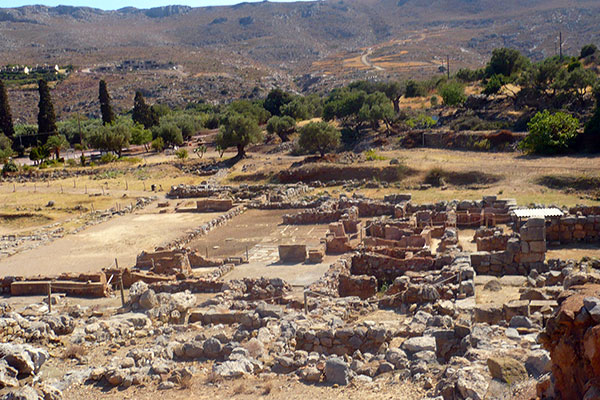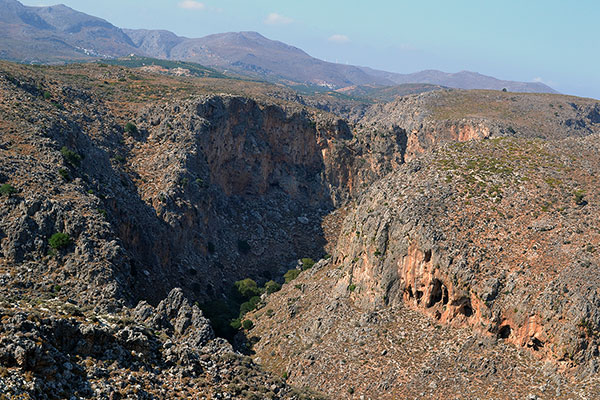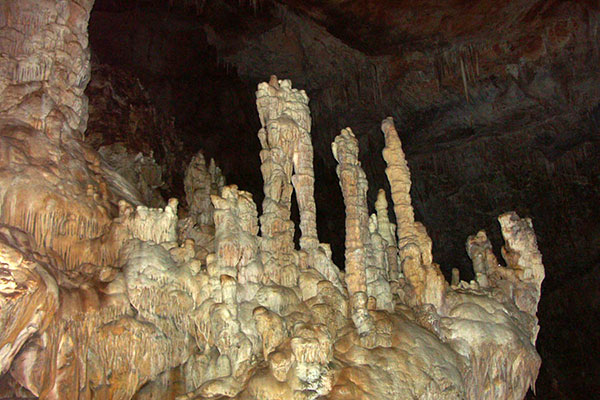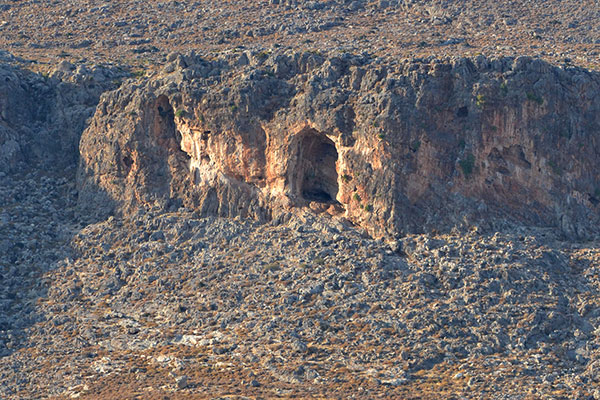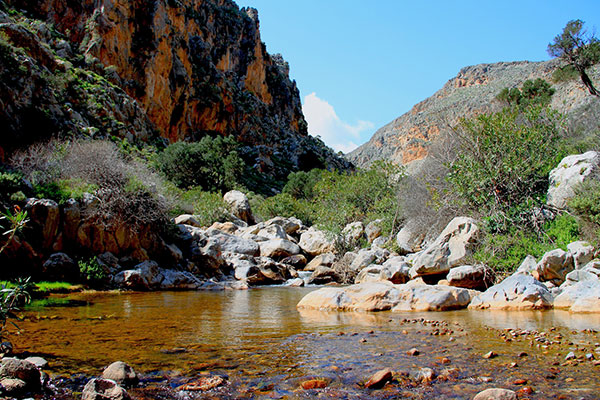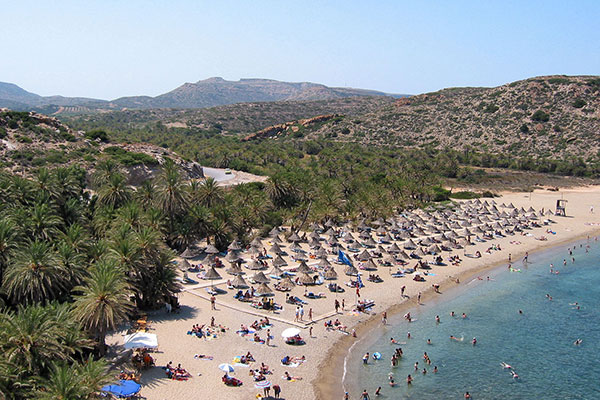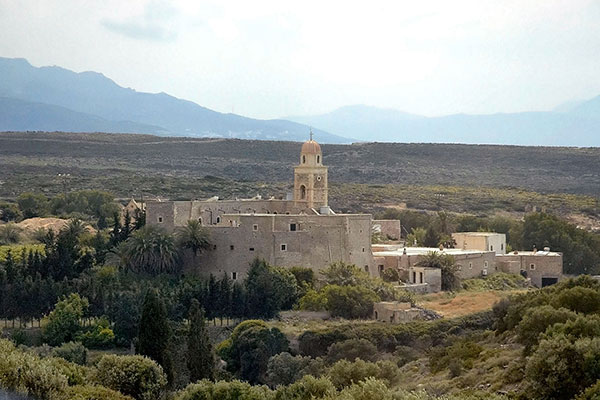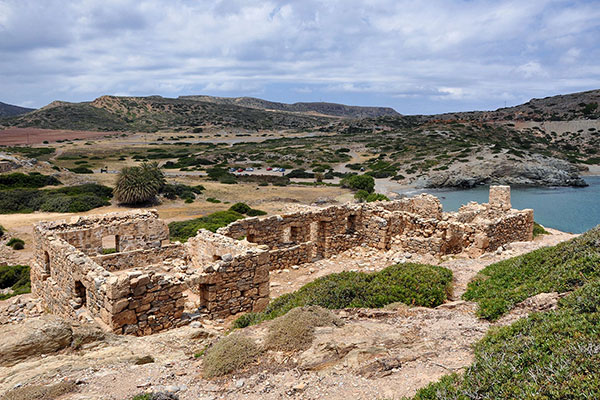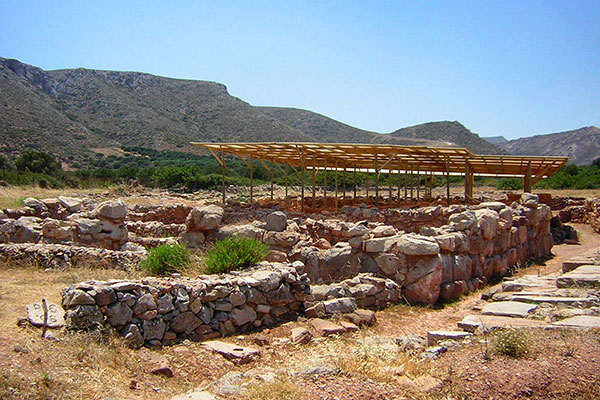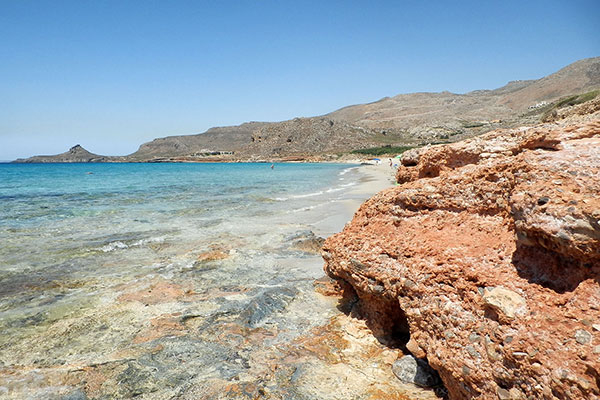LE PALAIS MINOEN DE KATO ZAKROS
Ici on rencontre les ruines du quatrieme palais minoen de Crete, le seul qui n' ait pas ete trouve pille. Construit en 1600 avant notre ere, il se composait de 180 appartements et occupait 8000m2.Kato ZakrosC’est D. G. Hogarth qui a commence les fouilles, mais c’est le professeur N. Platon qui est le principal archeologue du palais. Ce palais est plus petit que les autres, mais il a la meme disposition que ceux de Knossos et de Festos. Il a une cour centrale (couverte de dalles en pierre) autour de laquelle se developpe le batiment qui a un arrangement tortueux, avec trois entrees occidentales et une entree centrale ou il y a aussi un autel. Dans l' aile occidentale du palais, il y a les pieces des officiels tandis que dans l' aile nord il y avait les salles de banquets et des lucarnes. Du meme cote on a trouve de grands bassins qui avaient un caractere idolatrique. Les appartements principaux et les ateliers se trouvaient respectivement dans l’aile occidentale et nord. L’endroit ou le palais a ete construit etait de grande importance parce que de ce point, les Minoens pouvaient faire du commerce avec l’Orient et les autres palais de l’ile.
Dans les ruines on a mis au jour beaucoup de vases antiques qui etaient gardes dans les tresoreries du palais. Parmi les trouvailles les plus importantes, on distingue des epees couvertes de feuilles d’or, d’ ivoire, d’ objets decoratifs en cuivre de Chypre, et une amphore representant un temple et des fauves. Un grand nombre de ces trouvailles se trouve au musee archeologique d’ Herakleion.
